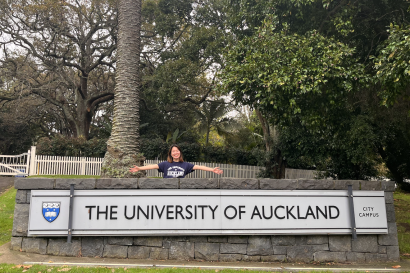After five weeks in the semester, mid-semester break has arrived at the University of Auckland. The two-week break provides the perfect time to travel around the area and catch up on any last-minute assignments. For my mid-semester break, I joined a trip with four friends, traveling to Queenstown (a town in the South Island of New Zealand) and Sydney and Airlie Beach in Australia. For 10 days, I was living out of a suitcase and trying new activities and new foods. One essential reason that this trip was possible was early planning and budgeting.
Planning
For this trip, my friends and I met a few times, beginning in the second week of the semester. Early on, our meetings were disorganized with different expectations of what our mid-semester trip could consist of. A big area of disagreement was where we wanted to go and what exactly we wanted to do. To minimize arguments, we ended up filling out a spreadsheet, detailed with the number of days we wanted to travel for, our budgets for plane tickets and accommodation, and sites we wanted to see. Then, during our meetings, we tried to identify commonalities in the spreadsheet.
During the planning stages, I’d say it’s good to aim big in terms of destinations and activities, but also remember that realistically, most activities are probably not feasible, either due to travel time, transportation availability, or expenses. In general, planning a trip with others requires communication and compromise!
Budgeting
Once we established the places we wanted to visit, the next big tasks were booking plane tickets, accommodations, and activities. Honestly, I did not have a good sense of my budget for this trip, considering I was living by the unspoken rule, “find the cheapest option possible.” However, as this trip was 10 days, I knew it was going to cost quite a bit. To be transparent with the costs, I decided to write this post!
In total, this trip cost approximately $2443 USD. This breaks down into:
- $760 USD in plane tickets
- $486 USD in accommodations
- $884 USD in activities
- $190 USD in food
- $93 USD in transportation
- $29 USD in souvenirs
Although I had fun, my wallet is certainly not having fun after this trip. 😦 Also, according to budgetyourtrip.com, a trip to Australia is approximately $162 USD/day, so theoretically, by this random website, this trip could have been $1620 USD...
One of the biggest costs of this trip was plane tickets. Just as a precaution, I ended up purchasing Jetstar Plus tickets, which was the more expensive option as it included checked baggage, inflight meal vouchers, and no fees for changing flight dates. However, Jetstar also offers Starter tickets, which is cheaper.
Another big cost was activities with tours of attractions such as Milford Sound, Great Barrier Reef, and Whitsunday Islands.
A few budgeting aspects that I either should’ve incorporated earlier/helped:
1. Keep a spreadsheet that tracks finances!
2. Identify which activities are truly “worth it”/are potential repeat experiences. For me, I enjoyed both tours of the Great Barrier Reef and the Whitsunday Islands, but honestly, I probably could’ve done without the Whitsunday Islands. Although it was beautiful, the activities (snorkeling and swimming) were similar to the Great Barrier Reef activities.
3. Grocery shop and cook for yourself if you can, especially if you’re traveling in a group!!

Lisa Penfield
At Tufts University I’m a Sustainable Solutions Fellow, a member of the Chinese Students Association, and a Volunteer Coordinator for the Food Rescue Collaborative. Outside of school, I enjoy running, baking, and learning to play frisbee!



